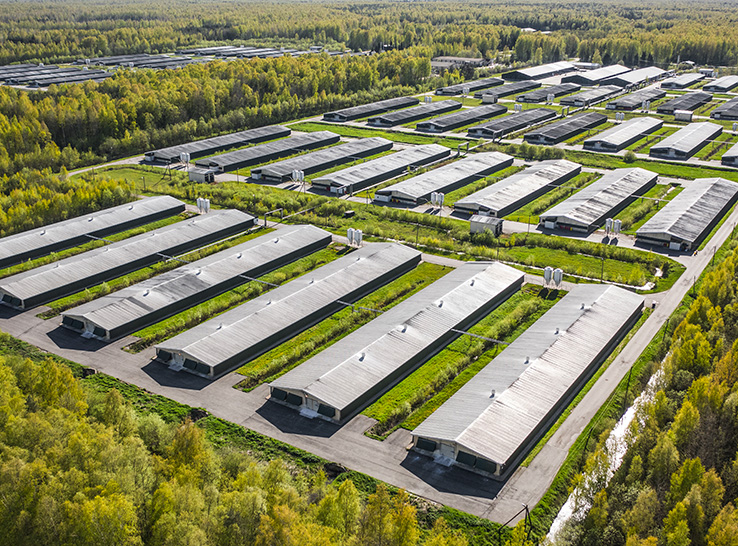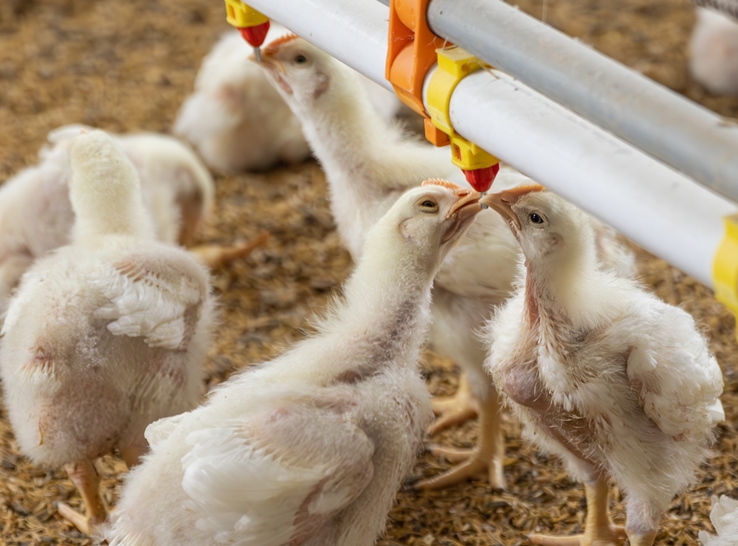Preventing disease transmission between flocks is a major goal of the poultry industry. One threat to bird health is the protozoan Histomonas meleagridis, which causes a disease called histomoniasis.
In commercial turkey flocks, histomoniasis has a mortality rate of 80% to 100%. To stop outbreaks, scientists and poultry producers need a better understanding of how the disease spreads.
A study published in The Journal of Applied Poultry Research and led by scientists at North Carolina State University suggests that having a broiler-breeder chicken farm within 1 mile of a turkey farm increases histomoniasis risk significantly.
For the new study, the researchers used 2015 retrospective data provided by a commercial turkey integrator located in North Caroline and South Carolina to map out potentially “at risk” tom flocks that were in close proximity to broiler breeder chicken farms.
Preferred host
They believed nearby chicken farms could pose a problem because while chickens are less likely to die from histomoniasis, they are actually the preferred host for a parasite called the cecal worm, or Heterakis. These worms carry Histomonas meleagridis and transmit the protozoan inside its eggs.
“There is speculation by veterinarians and farmers that a turkey farm’s proximity to litter-raised chicken farms affects the likelihood of turkey flocks contracting histomoniasis,” write the study authors.
“This is especially plausible in the case of broiler breeder and broiler breeder pullet farms, where chickens reach ages old enough to have cycled Heterakis multiple times within the life of the flock, based on the Heterakis lifecycle.”
Indeed, the researchers found that proximity to broiler breeder farms did come with increased risk. Of all grow-out tom farms that broke out with histomoniasis in the 2015 dataset, 15.38% had a broiler breeder farm within 1 mile, while only 2.13% of grow-out tom farms that did not have an outbreak had a broiler breeder farm within 1 mile.
Overall, grow-out tom farms in the one mile “at risk” category were 3.45 times more likely to develop histomoniasis than any of the integrator’s other grow-out tom farms. Broiler breeder farms greater than one mile away posed no increased risk.
Importance of biosafety
The new findings emphasize the importance of biosafety and the importance of assessing the risk of water runoff, worker movements between facilities — and worm life cycles and habitats. The risk of disease transmission is the reason chickens and turkeys are already housed at separate facilities, but the researchers say more could be done to track disease and protect turkey flocks.
“Frequency and completeness of broiler breeder facility clean-outs and how litter from these flocks is handled need to be factored into future analyses as such events could drive potential vectors to seek new shelter and food in nearby turkey houses,” they write.
The full paper, titled “Histomoniasis outbreaks in commercial turkeys in the southeastern United States: Proximity of broiler breeder farms as a potential risk factor in disease development,” can be found here.
Editor’s note: Content on Modern Poultry’s Industry Insights pages is provided and/or commissioned by our sponsors, who assume full responsibility for its accuracy and compliance.








